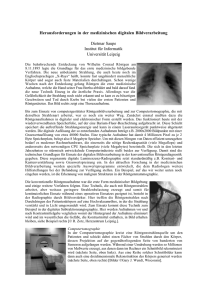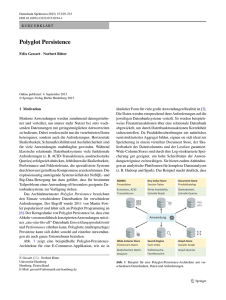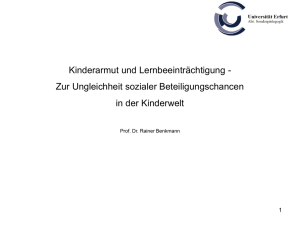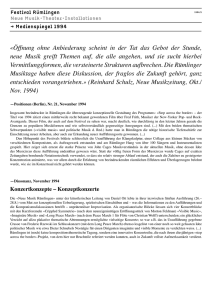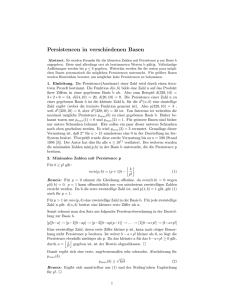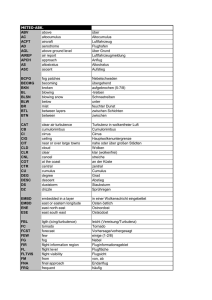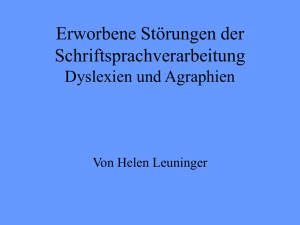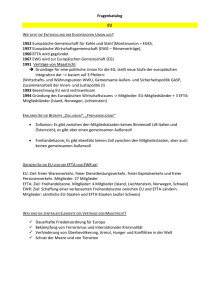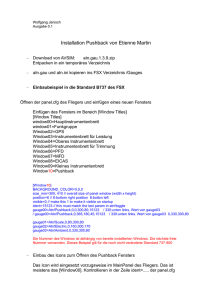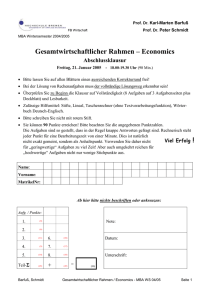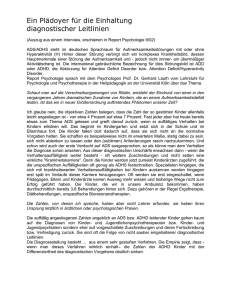3.4 Sekundäre Ursachen - des Instituts für Psychologie an der
Werbung
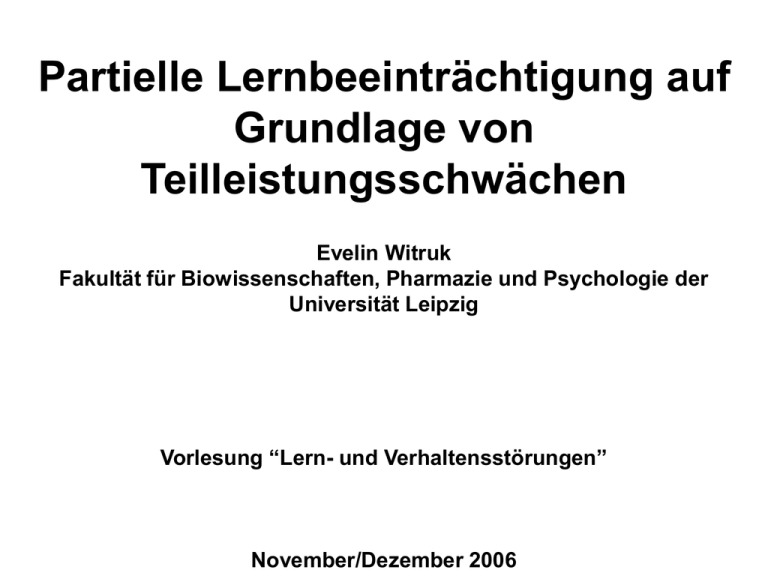
Partielle Lernbeeinträchtigung auf Grundlage von Teilleistungsschwächen Evelin Witruk Fakultät für Biowissenschaften, Pharmazie und Psychologie der Universität Leipzig Vorlesung “Lern- und Verhaltensstörungen” November/Dezember 2006 Überblick 1 2 3 3.1 3.2 3.3 3.4 3.5 3.6 4 Definitionen Partielle Lernbeeinträchtigung, umschriebene Entwicklungsstörung, Teilleistungsschwäche Erklärungsmodell von Habib (2000) Legasthenie Definition, Ausschlußkriterien, Prävalenzraten, Subtypen Mehrebenenmodell von Valtin (modif. 1996) Primäre Ursachen der Legasthenie Sekundäre Ursachen – Teilleistungs-schwächen Primäre Symptome – Lese- und Rechtschreibversagen Ausbildung sekundärer Symptome Weitere partielle Lernbeeinträchtigungen (Rechenschwäche, motorische, sprachliche Beeinträchtigungen) 1 Definitionen Partielle Lernbeeinträchtigung, umschriebene Entwicklungsstörung, Teilleistungsschwäche 2 Erklärungsmodell von Habib (2000) zum Zusammenhang von verschiedenen Teilleistungsschwächen Dyspraxia, Verzögerte Entwicklung der zeitlichen Begrifflichkeiten Störung der Phonemunterscheidung Dysgraphia Temporales Verarbeitungsdefizit Dyskalkulie Sprach-/ Sprechstörungen Störung der phonologischen Bewusstheit Morphosyntaktische Regeln Visuelle Wahrnehmungsstörung Rechtschreibschwäche Störung des Arbeitsgedächtnisses Leseschwäche . 3 Legasthenie (LeseRechtschreibschwäche, Dyslexia) 3.1 Definition, Ausschlußkriterien, Prävalenzraten, Subtypen 3.2 Mehrebenenmodell nach Valtin, 96) (modif. Diagnostik primär Ursachen sekundär primär Symptome sekundär Intervention 3.3 Diagnostik/Analysen primärer Ursachen Beispiel: Visible Persistence is the amount of time for which a visual stimulus continues to be seen after it has been terminated (Breitmeyer et.al. 1976) Methods of the Study Frame 1 Frame 2 A B C Ternus Display Element Movement Group Movement Variables plan Samples Description of the Samples (Age in month) 600 Adults 480 Adults 360 Children Children 240 120 0 Witruk, 2002 Slaghuis, 1996 Description of the Samples (IQ) Adults 140 120 Children Children Adults 100 80 Witruk, 2002 Slaghuis, 1996 Results Visible persistence in Dyslexics and in other groups with developmental disorders Do exist a visible deficit in dyslexics? How spezific is this deficit? black/wite presentation ISI 17-67 Geschätztes Randmittel von MEASURE_1 Bei LOCAL = Germany 1,0 ,8 ,6 GRUPPE Geschätztes Randmittel von MEASURE_1 Kontrollgruppe ,4 Bei LOCAL = Australia Legastheniker1,0 ,2 Hyperaktive 1 2 ISI All subjects Geschätztes Randmittel ,8 0,0 Rechenschw ache 3 4 GRUPPE ,6 Kontrollgruppe ,4 Legastheniker ,2 Hyperaktive 0,0 Rechenschw ache 1 2 3 ISI Nicht-schätzbare Mittelw erte w erden nicht dargestellt 4 Cluster analysis of the German subjects 120 100 80 CL_1 60 CL_2 40 How strong is the correspondence with the groups? CL_3 CL_4 20 CL_5 0 CL_6 1 2 3 4 Sequenznummer 5 6 7 8 9 10 11 12 Dyslexia subtypes and their discrimination (Germany) Dyslexia subtypes (3 clusters) 1,0 ,8 ,6 ,4 VAR00001 ,2 VAR00002 0,0 VAR00003 1 2 3 4 Sequenznummer 5 6 7 8 9 10 11 12 3.4 Sekundäre Ursachen – Teilleistungsschwächen (Beispiel:Arbeitsgedächtnis bei Legastenikern im Kultur/Sprachvergleich) a b Tasks sets c ? d ? Characteristics of the subsamples Reaction time for correct responses Reaction time for correct responses Means of local maxima Means of local maxima Diskussion der beiden Experimente Experiment 1: - It is no significant effect of location in basic, visible function like visible persistence. - The group effect in Australia is significant, in Germany not till then significant, when the dyslexia subtypes were integrated. - Only one dyslexia subtype (6) showes a significant longer duration of the visible persistence than the other groups. - An other dyslexia subtype (5) showes a similar persistence like the dyscalculia group in the sense of shorter duration of visible persistence. - We found an age stability of the visible persistence for all subjects. -The discrimation of the groups and subtypes by the variables of concentration ability (accuracy and speed) is corresponding with Vidyasagars (1999) model of the flexibility of the locus for focal attention. -The groups overlapping clusters link to similarities in the visual partial performances in different developmental disorders like dyslexia, dyscalculia, attention deficit disorder and in the control group. This result is corresponding with the model of Habib (2000) and supports the assumption of an unspecific common deficit on the temporal processing. Experiment 2: - High Chinese superiority effect regarding the phonological loop (significant lower reaction time and higher accuracy) and the visual-spatial sketchpad (significant lower reaction time) - High discrmination of dyslexics in the German samples by the auditory tasks with highly controlled executive processes (serial recall). Summarized: - Basic, early visual functions do not show cultural/language dependency. Their specificity only for dyslexics could not be found. - Higher, complex visual and auditory functions, which involve working memory performances, show a strong dependency of the language/culture. 3.5 Primäre Symptome – Versagen im Lesen und/oder Rechtschreiben 3.6 Ausbildung sekundärer Symptome 4 Weitere partielle Lernbeeinträchtigungen (Rechenschwäche, motorische, sprachliche Beeinträchtigungen)
